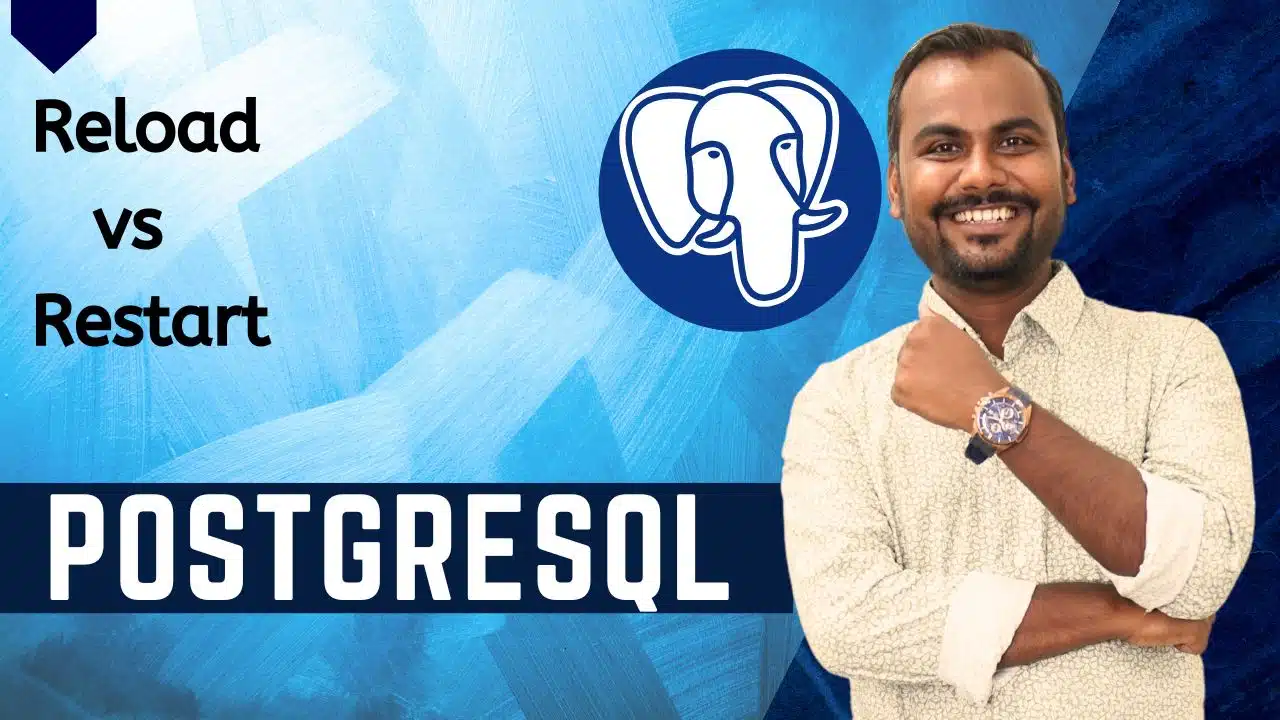PostgreSQL Reload vs Restart
Introduction
PostgreSQL reload vs restart
When managing a PostgreSQL database, DBAs often need to apply configuration changes.
But not all changes require a full database restart. Some can be applied instantly using a simple reload.
So, what’s the difference between PostgreSQL Reload vs Restart, and when should you use each?
Let’s break it down. 👇
Understanding PostgreSQL Configuration Files
PostgreSQL configuration parameters are stored in:
-
postgresql.conf– main configuration file -
pg_hba.conf– client authentication settings -
pg_ident.conf– user mapping for authentication
When you modify these files, PostgreSQL needs to re-read them — either via reload or restart.
What is a Reload?
A reload means PostgreSQL re-reads its configuration files without stopping or restarting the server.
Running sessions stay active, and there’s no downtime.
You can trigger a reload in several ways:
✅ Reload applies changes to:
-
Logging (
log_min_duration_statement, etc.) -
Autovacuum settings
-
Planner options
-
Statement timeout values
🚫 Reload does NOT apply changes to:
-
shared_buffers -
max_connections -
wal_level
(these require a restart)
What is a Restart?
A restart means the PostgreSQL server process stops and then starts again.
All active connections are closed temporarily — resulting in brief downtime.
Command examples:
✅ Restart is required when:
-
Changing memory parameters (
shared_buffers,work_mem) -
Modifying WAL parameters (
wal_level,max_wal_size) -
Adjusting connection limits (
max_connections) -
Enabling/disabling extensions that affect system startup
When to Use Reload vs Restart
| Scenario | Action | Downtime |
|---|---|---|
| Change in logging level | Reload | ❌ No |
| Increase shared_buffers | Restart | ✅ Yes |
| Update connection limit | Restart | ✅ Yes |
| Change autovacuum settings | Reload | ❌ No |
| Enable logical replication | Restart | ✅ Yes |
At Learnomate Technologies, we make sure you not only understand such cutting-edge features but also know how to implement them in real-world projects. Whether you’re a beginner looking to break into the database world or an experienced professional upgrading your skillset—we’ve got your back with the most practical, hands-on training in Oracle technologies.








Let’s keep learning, exploring, and growing together. Because staying curious is the first step to staying ahead.
Happy learning!
ANKUSH







